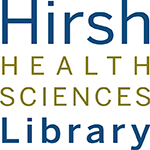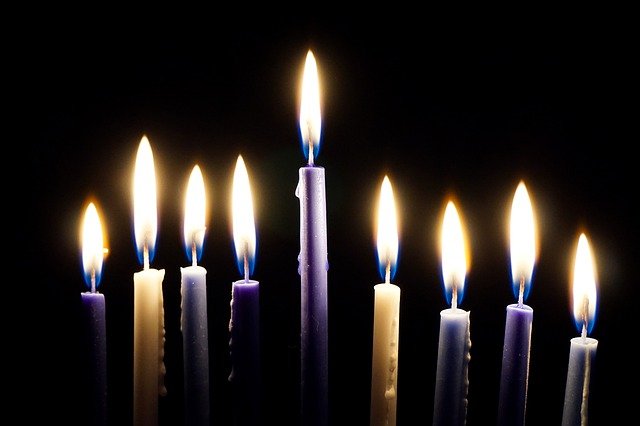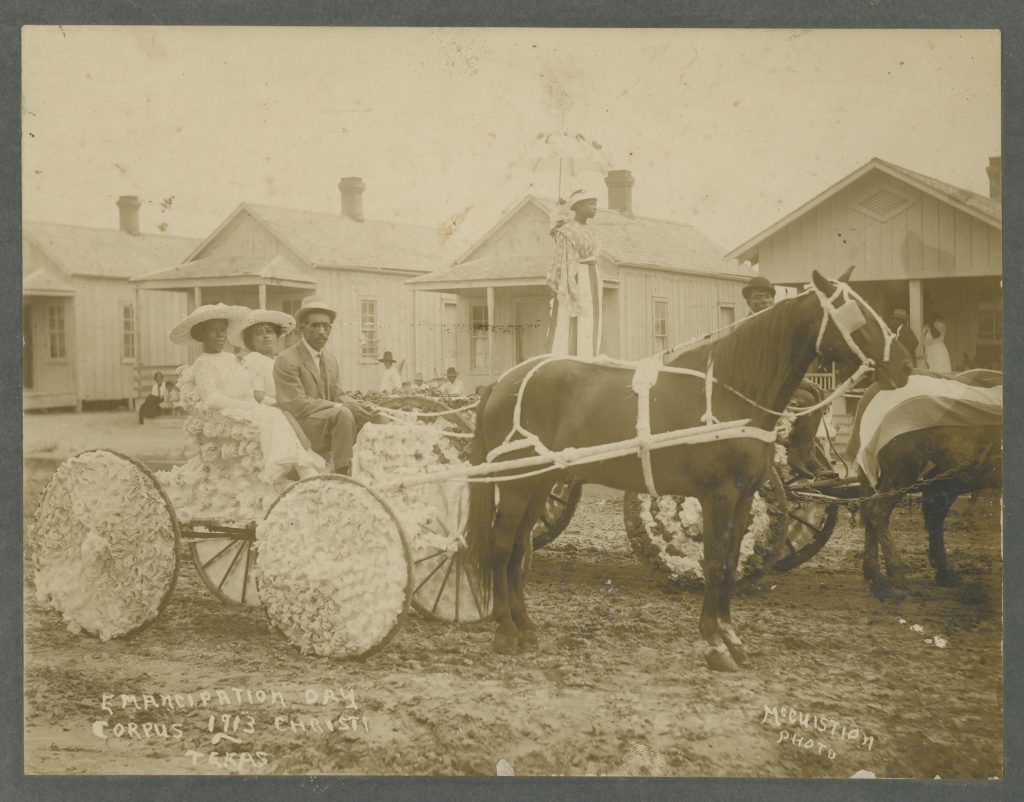** Please enjoy this repost, chock-full of Boston Massacre info! While 2021’s social-distancing rules prevent Revolutionary Spaces from holding the annual reenactment in front of the Old State House, if you are interested in the events of 1770, Crispus Attucks Day, and the wider history of the fight for racial […]
** Please enjoy this repost, chock-full of Boston Massacre info! While 2021’s social-distancing rules prevent Revolutionary Spaces from holding the annual reenactment in front of the Old State House, if you are interested in the events of 1770, Crispus Attucks Day, and the wider history of the fight for racial and social justice in Boston, join Revolutionary Spaces March 5th at 5:00 pm for Grief, Remembrance, Justice: the Boston Massacre Anniversary. This panel discussion will reflect on the legacy of Melnea Cass and will be held via Zoom. **
…Your estates and your freedom, your children and Wives; A story I’ll tell you that’s truth now indeed, And when you hear of it your hearts will bleed.
The above comes from A Verse Occasioned by the late horrid Massacre in King-Street, a broadside published in Boston in 1770 to express outrage over the events of the evening of March 5th, the event we now know as the Boston Massacre. On the evening of March 5, 1770, a row broke out in front of the Custom House on King Street (now State Street) in Boston. Accounts of what provoked the trouble are mixed, but most include a soldier striking a boy, and a mob of Bostonians replying by hurling both snowballs and insults at the soldier. As the crowd grew more hostile, more soldiers were called in, and eventually nine armed British soldiers faced a rowdy group of over 50 colonists. Eventually, the soldiers fired into the mob, and when the casualties were totaled, five men were dead and six more were injured. The events of that March evening were seized upon by Boston radicals, and spun to create even more animosity toward the Crown. One of the most famous pieces of propaganda is Paul Revere’s compelling (if inaccurate) depiction of the event, which circulated wildly in the spring of 1770.
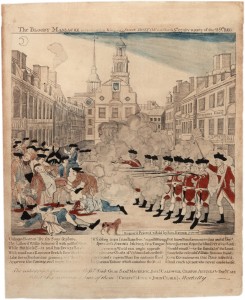
Paul Revere, “The Bloody Massacre in King-Street, March 5, 1770.” Boston, 1770. (Gilder Lehrman Collection)
Of course, this event took place a short walk from the Hirsh Health Sciences Library. Commemorate this event with a Boston Massacre Study Break! Start on the Freedom Trail, and visit the Boston Massacre Marker on the corner of State and Congress Streets, right near the Old State House. Head back toward campus on Tremont Street, and stop in at the Granary Burying Ground. You’ll find the grave marker for the victims of the Massacre next to Samuel Adams. You can also visit with John Hancock and Paul Revere while you’re there. As you follow Tremont toward Boylston Street, take a detour into Boston Common at Avery Street, and enjoy the beautiful Boston Massacre/Crispus Attucks Monument, erected in 1888.
Hanukkah starts this evening at sundown and ends next Friday, December 18th. Also known as the “festival of lights,” Hanukkah commemorates the re-dedication of the holy temple in Jerusalem following the Maccabean Revolt against the Seleucid Empire in the 2nd century B.C.E., when one night’s worth of oil miraculously lasted for […]
Hanukkah starts this evening at sundown and ends next Friday, December 18th. Also known as the “festival of lights,” Hanukkah commemorates the re-dedication of the holy temple in Jerusalem following the Maccabean Revolt against the Seleucid Empire in the 2nd century B.C.E., when one night’s worth of oil miraculously lasted for eight nights. Here’s a brief rundown of the story and traditions if you want to know more!
Foods fried in oil are a staple of Hanukkah celebrations (latkes, anyone?), but since we’re a health sciences library, we thought we’d share some ideas we’ve found for healthier Hanukkah foods:
Healthy Takes on Traditional Hanukkah Recipes from Chowhound
6 Easy Ways to Make Your Hanukkah Meal a Healthy Feast from Real Simple
18 Vegan Hanukkah Recipes from One Green Planet
Apricot Gelt from Martha Stewart
However, because it is a holiday, we can’t resist sharing the only sufganiyot (jelly doughnut) recipe you’ll ever need.
Wishing you a Happy and Healthy(-ish) Hanukkah from the Hirsh Health Sciences Library!
June 17, 2020 is the 245th anniversary of the Battle of Bunker Hill, an event we mark in the Commonwealth of Massachusetts as Bunker Hill Day. With in person celebrations and exploration is understandably off the table this year, here are the Top Ten Things You Should Know About Charlestown and the […]
June 17, 2020 is the 245th anniversary of the Battle of Bunker Hill, an event we mark in the Commonwealth of Massachusetts as Bunker Hill Day. With in person celebrations and exploration is understandably off the table this year, here are the Top Ten Things You Should Know About Charlestown and the Battle of Bunker Hill according to our Head of Research & Instruction and Charlestown denizen, Becky Morin
1) The Battle of Bunker Hill was mostly fought on Breed’s Hill. That’s where the Monument is. Bunker Hill is actually taller and steeper, and is home to the lovely Saint Francis de Sales, a beautiful Roman Catholic church dedicated in 1862. If you don’t know which hill is which, we know you’re a tourist.

By Siddharth Mallya. CC BY-SA 3.0 via Wikimedia Commons
3) Charlestown is where Paul Revere’s Midnight Ride really kicked off. He was ferried in a rowboat from Boston, landing near the Charlestown Battery, where he picked up a horse from his friend Deacon John Larkin, a lifelong Charlestown resident.
4) There is debate as to why the Colonial forces fortified Breed’s Hill instead of Bunker Hill, although many think it is because Breed’s Hill is closer to Boston. The British had planned the siege to capture Bunker Hill, as they wanted to dig in fortifications on the area’s highest points.
5) It took the British three attempts to capture Breed’s Hill, even though their numbers were far greater than the Colonial forces.
6) Charlestown burned after the Battle, the first of two major fires to strike the community.
7) Proud Charlestown residents still fly the Bunker Hill Battle Flag.
8) While the British defeated the Colonists at the Battle of Bunker Hill, they suffered severe casualties and the Siege of Boston came to a stalemate.9) The Bunker Hill Monument (which you now know is on Breed’s Hill) is 221 feet tall and was completed in 1842.
10) Beloved French hero of the American Revolution, the Marquis de Lafayette, is said to be buried beneath a sprinkling of soil from Bunker Hill, procured by his son.
Want More?
http://www.smithsonianmag.com/history/the-true-story-of-the-battle-of-bunker-hill-36721984/
http://charlestownhistoricalsociety.org/history/historic-timeline/
https://www.masshist.org/revolution/bunkerhill.php
https://memory.loc.gov/ammem/today/jun17.html
**Please enjoy this repost from five years ago, as we now commemorate the 250th Anniversary of the Boston Massacre! The slate of events for the 2020 commemoration can be found here: https://www.bostonhistory.org/massacre250.**
You true SONS of LIBERTY, who value your Lives, Your estates and your freedom your children and Wives ; A […]
**Please enjoy this repost from five years ago, as we now commemorate the 250th Anniversary of the Boston Massacre! The slate of events for the 2020 commemoration can be found here: https://www.bostonhistory.org/massacre250.**
The above comes from A Verse Occasioned by the late horrid Massacre in King-Street, a broadside published in Boston in 1770 to express outrage over the events of the evening of March 5th, the event we now know as the Boston Massacre. On the evening of March 5, 1770, a row broke out in front of the Custom House on King Street (now State Street) in Boston. Accounts of what provoked the trouble are mixed, but most include a soldier striking a boy, and a mob of Bostonians replying by hurling both snowballs and insults at the soldier. As the crowd grew more hostile, more soldiers were called in, and eventually nine armed British soldiers faced a rowdy group of over 50 colonists. Eventually, the soldiers fired into the mob, and when the casualties were totaled, five men were dead and six more were injured. The events of that March evening were seized upon by Boston radicals, and spun to create even more animosity toward the Crown. One of the most famous pieces of propaganda is Paul Revere’s compelling (if inaccurate) depiction of the event, which circulated wildly in the spring of 1770.

Paul Revere, “The Bloody Massacre in King-Street, March 5, 1770.” Boston, 1770. (Gilder Lehrman Collection)
Of course, this event took place a short walk from the Hirsh Health Sciences Library. Commemorate this event with a Boston Massacre Study Break! Start on the Freedom Trail, and visit the Boston Massacre Marker on the corner of State and Congress Streets, right near the Old State House. Head back toward campus on Tremont Street, and stop in at the Granary Burying Ground. You’ll find the grave marker for the victims of the Massacre next to Samuel Adams. You can also visit with John Hancock and Paul Revere while you’re there. As you follow Tremont toward Boylston Street, take a detour into Boston Common at Avery Street, and enjoy the beautiful Boston Massacre/Crispus Attucks Monument, erected in 1888. If your interest is piqued, there is a full day of (ahem) “family friendly events” planned at the Old State House Museum, including activities for little ones and culminating in the annual reenactment of the Boston Massacre at 7:00 pm this Saturday.
50 years ago, on July 16, 1969, at 9:32 in the morning, the Apollo 11 mission launched from Cape Canaveral, Florida, aboard a Saturn V rocket. This was going to be the culmination of decades of work, and on July 20th, Neil Armstrong and Buzz Aldrin would walk on the […]
50 years ago, on July 16, 1969, at 9:32 in the morning, the Apollo 11 mission launched from Cape Canaveral, Florida, aboard a Saturn V rocket. This was going to be the culmination of decades of work, and on July 20th, Neil Armstrong and Buzz Aldrin would walk on the moon, the first two people in human history to do it. This Saturday, July 20th, is the 50th anniversary of the landing! There is a wealth of interesting things out there about the moon landing and the Apollo missions as a whole, but here are a couple to get you up to speed. I’ve read and watched most of this by this point, so I can happily tell you it’s quality stuff.
First: NASA is running a lot of events (including live streams) in honor of the 50th anniversary. They have a whole schedule on their website, and I highly recommend taking a look!
Second: NASA has released some stunning photos in honor of the anniversary. Check ’em out, all for free! You won’t even need your Tufts Login!
Third: if you prefer to read (or need to keep your roving data costs down when off of WiFi), I’d recommend checking out Amy Shira Teitel’s Twitter account. She runs a very interesting YouTube channel called Vintage Space, and there are few laypeople quite as well steeped in space exploration history (particularly of NASA and its missions) as she is. Over on Twitter, however, she’s doing a live stream text and video of the full Apollo 11 mission, as it was happening. You can pretend you’re in 1969, but without the pesky interference of not having your smartphone!
Fourth: Books! If you want to honor this anniversary by digging into the moon missions and NASA a little bit more, Tufts has got you covered. For instance, Carrying the Fire: An Astronaut’s Journey is the autobiography by Michael Collins, the pilot of the Apollo 11 mission. While Armstrong and Aldrin walked on the lunar surface, Collins orbited in the spacecraft, and is the man who got them there and back safely. Moon Shot: the Inside Story of America’s Race to the Moon and Almost Heaven: the Story of Women in Space can also add some interesting context for you in space travel. If you want something a little more close to home (since we are a health sciences campus), there’s always Trailblazing Medicine: Sustaining Explorers During Interplanetary Missions. But if you’re going to be sitting on a beach and want something a bit more…fictional, you could to a whole lot worse than the very popular (and very funny) book The Martian by Andy Weir. These are only the tip of the rocket, of course. Poke around on JumboSearch and who knows what you’ll find! And don’t forget, if you want anything from one of the other Tufts Libraries, all you need to do is Request Book. You might not get it in time to read it this weekend, but there’s still plenty of 50th anniversary summer ahead of us.
Finally, I will leave you with this list of breakthroughs & advances. Space exploration is a dangerous game, and scientists need to stay one step ahead of nature if humans are to survive in such a hostile environment. Luckily, when they do, life down here on Earth can get a little better too – everything from LED lights and memory foam to better firefighting equipment and prosthetic limbs owes a bit of debt (or its existence entirely) to missions like Apollo 11.
So, for a few moments this Saturday, if you look around at the technology that powers your life, perhaps take a look upward, too, at the moon, and reflect for a moment on all the brave and brilliant people that made that event possible 50 years ago. What a wild ride it’s been.
Ad astra,
Tom
June 17, 2019 is the 244th anniversary of the Battle of Bunker Hill, an event we mark in the Commonwealth of Massachusetts as Bunker Hill Day. It falls just after Father’s Day this year, so instead of watching war reenactments on the History Channel, why not take Dad out to bone up on some […]
June 17, 2019 is the 244th anniversary of the Battle of Bunker Hill, an event we mark in the Commonwealth of Massachusetts as Bunker Hill Day. It falls just after Father’s Day this year, so instead of watching war reenactments on the History Channel, why not take Dad out to bone up on some local history?
- Celebrate the belated birthday of Bunker Hill Hero Joseph Warren today or any day (his birthday is June 11) with a trip to his namesake landmark the Warren Tavern, a fine establishment dating back to 1780 and frequented back in the day by Warren’s good friend, Paul Revere.
- Kick off the weekend early and celebrate a turning point in the Revolution by joining Mayor Marty Walsh at City Hall Plaza to witness the raising of the Bunker Hill Flag on June 14th at noon.
- Visit Charlestown on Saturday June 15 for Bunker Hill Family Fun Day and a concert at the Monument. There will be music, art projects for kids, and much more. And it’s free! All Dads love free things!
- Visit the Bunker Hill Monument for the “Decisive Day” guided tour offered by the Boston National Historic Park, which departs daily every half hour.
- Head out to Quincy to the Adams National Historical Park on Monday June 17 for the special event “Bunker Hill to Penn’s Hill,” where you can learn about Abigail Adams and young John Quincy Adams, who watched the battle rage from ten miles away atop Penn’s Hill.
If you don’t have time to get out this weekend, here are the Top Ten Things You Should Know About Charlestown and the Battle of Bunker Hill according to our Head of Research & Instruction and Charlestown denizen, Becky Morin
1) The Battle of Bunker Hill was mostly fought on Breed’s Hill. That’s where the Monument is. Bunker Hill is actually taller and steeper, and is home to the lovely Saint Francis de Sales, a beautiful Roman Catholic church dedicated in 1862. If you don’t know which hill is which, we know you’re a tourist.

By Siddharth Mallya. CC BY-SA 3.0 via Wikimedia Commons
3) Charlestown is where Paul Revere’s Midnight Ride really kicked off. He was ferried in a rowboat from Boston, landing near the Charlestown Battery, where he picked up a horse from his friend Deacon John Larkin, a lifelong Charlestown resident.
4) There is debate as to why the Colonial forces fortified Breed’s Hill instead of Bunker Hill, although many think it is because Breed’s Hill is closer to Boston. The British had planned the siege to capture Bunker Hill, as they wanted to dig in fortifications on the area’s highest points.
5) It took the British three attempts to capture Breed’s Hill, even though their numbers were far greater than the Colonial forces.
6) Charlestown burned after the Battle, the first of two major fires to strike the community.
7) Proud Charlestown residents still fly the Bunker Hill Battle Flag.
8) While the British defeated the Colonists at the Battle of Bunker Hill, they suffered severe casualties and the Siege of Boston came to a stalemate.9) The Bunker Hill Monument (which you now know is on Breed’s Hill) is 221 feet tall and was completed in 1842.
10) Beloved French hero of the American Revolution, the Marquis de Lafayette, is said to be buried beneath a sprinkling of soil from Bunker Hill, procured by his son.
Want More?
http://www.smithsonianmag.com/history/the-true-story-of-the-battle-of-bunker-hill-36721984/
http://charlestownhistoricalsociety.org/history/historic-timeline/
https://www.masshist.org/revolution/bunkerhill.php
https://memory.loc.gov/ammem/today/jun17.html
February 5th marked the start of Lunar New Year celebrations, which will continue through Tuesday, February 19th. 2019 is the Year of the Pig, the twelfth animal of the Chinese Zodiac. ChineseNewYear.net offers some background on the pig’s symbolism and the characteristics of those born in the Year of the […]
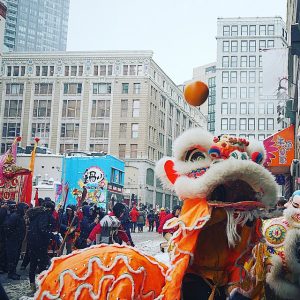
Chinese New Year in Boston’s Chinatown by Andrew Choy is licensed under CC BY 2.0
February 5th marked the start of Lunar New Year celebrations, which will continue through Tuesday, February 19th. 2019 is the Year of the Pig, the twelfth animal of the Chinese Zodiac. ChineseNewYear.net offers some background on the pig’s symbolism and the characteristics of those born in the Year of the Pig.
Our campus is well positioned to take part in celebrations! Boston’s Chinatown hosts the largest parade in New England, which will kick off at 11am on Sunday 2/17 from Phillips Square (the corner of Harrison and Essex) and wend its way through the streets of Chinatown. Boston Discovery Guide gives a good run down of what you’ll expect to see during the parade. After the parade, stick around to explore the Cultural Village which will feature arts, crafts, and cultural demonstrations. The Pao Arts Center is holding a number of workshops on Sunday as well, from dumpling-making and tea-tasting, to Lion Dance workshops for kids.
If you are celebrating Lunar New Year, we wish safe travels and much joy and prosperity this year! 恭贺新禧 Happy New Year!
January is National Soup Month, at least, it is according to the good people at Campbell’s, and we feel like they know a thing or two about soup. And here at the Hirsh Health Sciences Library, we know a bit about soup, too.
For example, according to this article published in The […]
January is National Soup Month, at least, it is according to the good people at Campbell’s, and we feel like they know a thing or two about soup. And here at the Hirsh Health Sciences Library, we know a bit about soup, too.
For example, according to this article published in The Nurse Practitioner, there may just be something to the idea that chicken soup is a valid treatment for the common cold. According to this paper, it provides relief from symptoms and decreases the inflammatory response related to viral illness- in other words, chicken soup might actually make you feel better when you’re sick. SCIENCE!
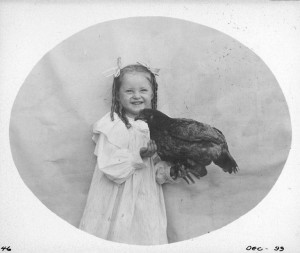
Cure for the Common Cold?
(courtesy University of Washington Libraries. Digital Collections: http://content.lib.washington.edu/u?/kiehl,360)
Regardless of its efficacy, who doesn’t like a hot bowl of soup in the winter, regardless of whether you’re under the weather? Research and Instruction Librarian Jane recommended this pot of Fire Roasted Tomato Soup for a yummy meal. If you’re looking for a weekend project (it is supposed to be quite chilly), make someone’s day with a labor-intensive batch of delicious Chicken Matzo Ball Soup (aka Jewish Penicillin). For vegetarians/vegans/spicy food lovers, this Lentil and Coconut Soup with Cilantro-Habanero Gremolata is delicious and cheap to make. It also makes enough soup to freeze for the next time you feel the sniffles coming on.
There’s a proverb (of Spanish or Portuguese origin, apparently) that states: “Of soup and love, the first is best.” We offer no opinion on the matter, but wish you a wonderful National Soup Month.
So the 4th didn’t fall so that we got a 3-day weekend, but that doesn’t mean you can’t have fun this Wednesday! There are still tons of fun events happening throughout the area and the forecast is clear for tomorrow night’s fireworks! Here are our suggestions for how to enjoy a happy […]
So the 4th didn’t fall so that we got a 3-day weekend, but that doesn’t mean you can’t have fun this Wednesday! There are still tons of fun events happening throughout the area and the forecast is clear for tomorrow night’s fireworks! Here are our suggestions for how to enjoy a happy and healthy holiday:
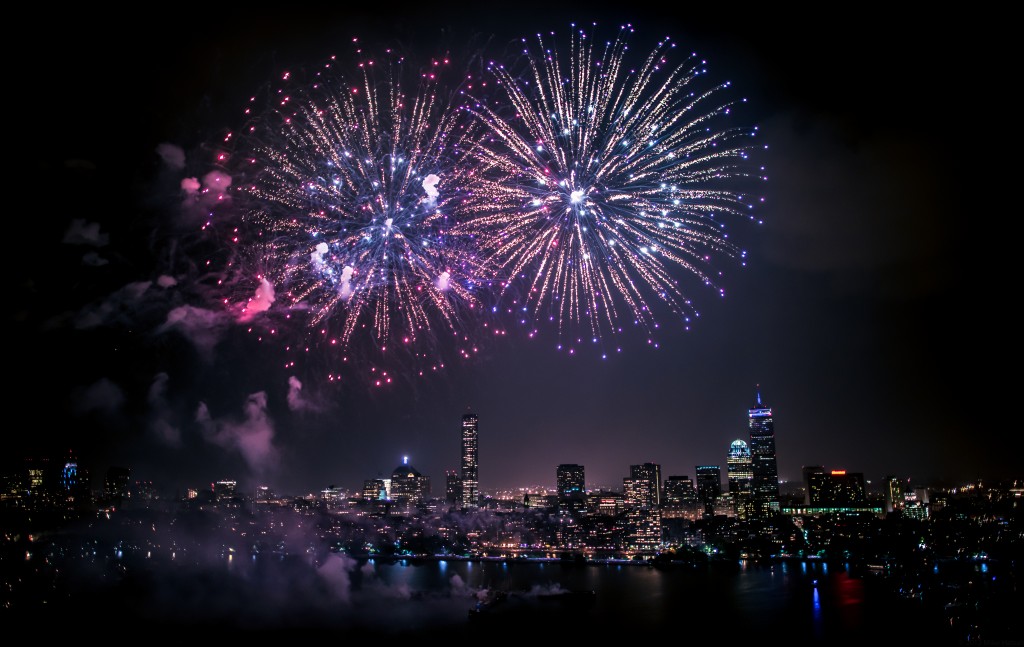
Fireworks Over Boston by Mike Halsall is licensed under CC BY-ND 2.0
The quintessential Boston 4th of July celebration is the Boston Pops performance and fireworks show on the Esplanade. Visit the official event website for a rundown of the schedule and more event details. CBS Boston has also put together a handy guide with viewing location suggestions and other useful tips. Our favorite tip? Go to the rehearsal concert tonight (Tuesday) to enjoy the music and find a less hectic spot to watch the fireworks on Wednesday.

Harborfest Drummers 1 by Greater Boston Convention and Visitors Bureau is licensed under CC BY-NC-ND 2.0
For activities with an educational bent, head down to Boston Harborfest. Dedicated to celebrating Boston’s harbor and history, it’s the largest 4th of July festival in the country and features tons of activities and tours, some free and some paid. Here’s the full schedule.
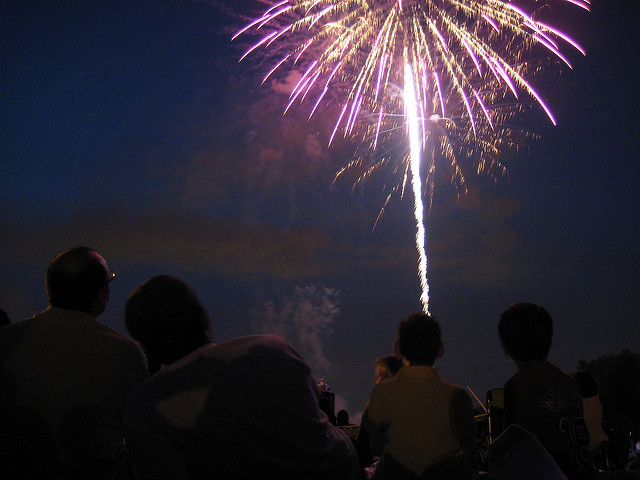
Newton Fireworks at at Halloran Sports and Rec Complex by Owen and Aki is licensed under CC BY-NC-ND 2.0
Don’t want to fight the crowds for Boston fireworks on the 4th? Newton and Waltham will also have fireworks displays on Wednesday 7/4 and Somerville with have them on Thursday 7/5. If you’re interested in going farther afield, here’s a list of all the fireworks displays planned for Independence Day celebrations in MA.
Wherever and however you decide to celebrate, we hope you have a happy, healthy, and safe Independence Day. And don’t forget to wear sunscreen!
If you ask most people when slavery was abolished in the United States, the closest you’ll get to an exact date is probably January 1, 1863, when the Emancipation Proclamation took effect. Drafted the prior September, President Lincoln used this document to “order and declare that all persons held as slaves […]
If you ask most people when slavery was abolished in the United States, the closest you’ll get to an exact date is probably January 1, 1863, when the Emancipation Proclamation took effect. Drafted the prior September, President Lincoln used this document to “order and declare that all persons held as slaves within said designated States, and parts of States, are, and henceforward shall be free; and that the Executive government of the United States, including the military and naval authorities thereof, will recognize and maintain the freedom of said persons.”
Proclamation nonwithstanding, it is not as if slavery ended overnight. It is important to remember that the Civil War kept raging, the Presidential decree did not free all the slaves in the United States, and in the days before a 24/7 news cycle, word traveled slowly. June 19, 1865 is now commemorated as the day Major General Gordon Granger of the Union Army issued orders from Galveston, Texas announcing “The people of Texas are informed that, in accordance with a proclamation from the Executive of the United States, all slaves are free.” Despite the fact that more than two years had passed since the enacting of the Emancipation Proclamation, it was General Granger’s order that brought freedom to 250,000 slaves in Texas. Texas was a remote outpost on the American frontier, so many consider June 19th, or “Juneteenth” as the true end of slavery in the United States. Juneteenth was celebrated the next year, and celebrations continued and spread as the years went by, sometimes celebrated as “Emancipation Day.”
The stories surrounding Juneteenth are rich, and (of course) influenced by and reflected in the tumultuous state of race relations in past and present America. We invite readers to learn about Juneteenth from Henry Louis Gates, Jr., from the Atlantic‘s Vann R. Newkirk II, and from Jamelle Bouie at Slate. (Virtually) check out information about historical Juneteenth celebrations from the New York Public Library, and (literally) check out Ralph Ellison’s posthumously published novel about the complicated construction of race and identity in America.
While many Boston area Juneteenth celebrations took place over the course of last weekend, you can still enjoy special free Juneteenth programming Wednesday evening (6/20) at the Museum of Fine Arts. This multimedia event includes interactive art demonstrations, singing and dancing, and film screenings, and is open to all ages.
Recent Posts
Categories
- 4th Floor Tabling (3)
- affiliation (4)
- Announcements (353)
- Book/Resource Reviews (117)
- Hours (131)
- Interviews (4)
- New Titles & Resources (114)
- News & Events (266)
- Open Workshops (48)
- Outside News & Events (66)
- resources (18)
- throwback thursday (5)
- Tips & Tricks (135)
- Uncategorized (148)
Tags
4th floor affiliation books Boston circulation crafts electronic resource electronic resources events exams extended hours food fun fun lab funlab graduation HHSL Hirsh Health Sciences Library holiday holiday hours holidays hours leisure reading library fun lab library service desk library staff new books open access open access week open workshop Open Workshops reserves resources staff statistics summer survey tea Thanksgiving therapy dogs Tufts Hirsh Health Sciences Library website welcome! writing consultants writing helpFollow us @TuftsHHSL!
Twitter feed is not available at the moment.
